This multimedia documentary project explores the periphery of a city and of memory through damaged, scattered or lost family photos. Conceived as a combination of micro-publications and an audiovisual installation in a public space, it draws a diachronic portrait of the city of Bombay /Mumbai and delves on our desire to preserve and revisit our individual and collective stories, while inviting us to reconsider our methods and practices of archiving memories.
"If the house… was on fire, what object would you run inside to save? Studies, polls and personal stories tell us that most of us would rush to the photo albums. The project presented here was born of a special encounter on the sidewalk of a street in Bombay known as Bodyguard Lane, where families had no real home nor album. The photos, yet, were there : here hidden under a sari corset, were stored in a plastic bag. When a photograph has neither roof nor book to shelter it, one must indeed protect it from all sorts of challenges. We learnt that these prints were put alongside precious objects in large fabric bags, themselves placed between the branches of peepal trees covering the street where these “homeless" families had been living for several decades, in order to minimise losses otherwise induced from regular demolition drives by municipal authorities. Thus emerged the striking vision of a city where trees were dotted with photographs.
Women are in general the caretakers of family memory. Those we met told us that, in order to safeguard their photos they had decided to leave them with close relatives who were lucky enough to live between four walls. But these backup strategies were put in place only after many bitter experiences of destructive rains and raids, and some images seemed to have disappeared forever. Our desire to digitise these photographs responded to this sense of urgency of the situation. Few months later, an album and a video emerged from this engagement."
"Our project denotes a special affection for photography as a physical object, coupled with a fascination for its totemic potential. What is really happening when you take a picture? When is it torn? When it is burnt? One of the most revealing moments, since we started to share our first experiments, lies in the fright that we observe when revealing the technical process used to make the video prototype, which literally diluting photos into thinner. Only when we clarify that it was not the originals that were dissolved, but rather copies can we feel a sense of relief in our audience.
In If The House, pictures are taking shape in front of us but the ‘truth’ rarely erupts from what we see on the screen. It often catches us less frontally, as through the other sense of hearing. For instance, when at the end of the fifth minute of the video, Anita's voice quivers as she recalls “the copy of the photo” which her husband had torn with anger, while she keeps preciously another copy with her today.
The viewing and appreciation of the photographs presented in our project is thereby primarily guided by the voices of the owners and subjects of the photographs. Either in the form of transcriptions in the album, or voice-overs in the video, they speak respectively about their experience of the city and their relationship to the photographs themselves. In the video, we hear the description of family photos that only remain in their memory. One of the most interesting aspect of this experiment lies in this incessant back and forth between the manifest / photographic image and the latent / mental one ; in this dance between ink particles that coalesce on a flat surface, set to music by the ebb and flow of memory, and the fluctuations of the voice through which it effectively takes shape. To relegate the (figurative) image to the backdrop, while privileging the spoken word, is finally a political gesture, a response to the recurring question of the power and agency of the photographed subject."
Proposal for an audiovisual Installation (module view)
Proposal for an Audiovisual Installation (Room View)
"At the same time an attempt to represent a specific city and an exploration of the global collective imagination of family photography, If The House therefore probes into what unites us, as sensitive beings endowed with a memory. The video projections, paired with ultrasound directional speakers, will be more ephemeral and we will veer us towards the intimate, with a more idiosyncratic expression of memory. At a time when the overabundance of images (including personal) has become a nuisance, these "chambers" will offer us an opportunity to appreciate photographs over a certain duration of time. The audiovisual orchestration is also meant to be quite experiential and to make us feel the power of perspective not only with sight but also with sound. When entering the room, we will first be hearing a blend of whispering voices ; then approaching a specific module, we will be able to start distinguishing words and enter into someone’s narrative.
One of the initial motivation of this project consisted in not taking new photos, but in rather making existing ones speak. If we were then to understand our approach in more (familiar) technological terms for digital photography, we could say that we intend to focus on retrieving lost data and / or building metadata. Except that we rely a lot on the materiality of the image in this case.There is a certain ecology at play here : a desire to recycle visual debris in order to create social link, possibly around a shared experience of beauty ; a desire also to put back orality at the center of our experience of collective memory. Closing the eyes for a second. Then opening them back and turning the page of an album, possibly with someone else. In the end asking the question : what does it mean to look at an album ? And will this object and this way of engaging with the past, inevitably vanish from our existences ?"
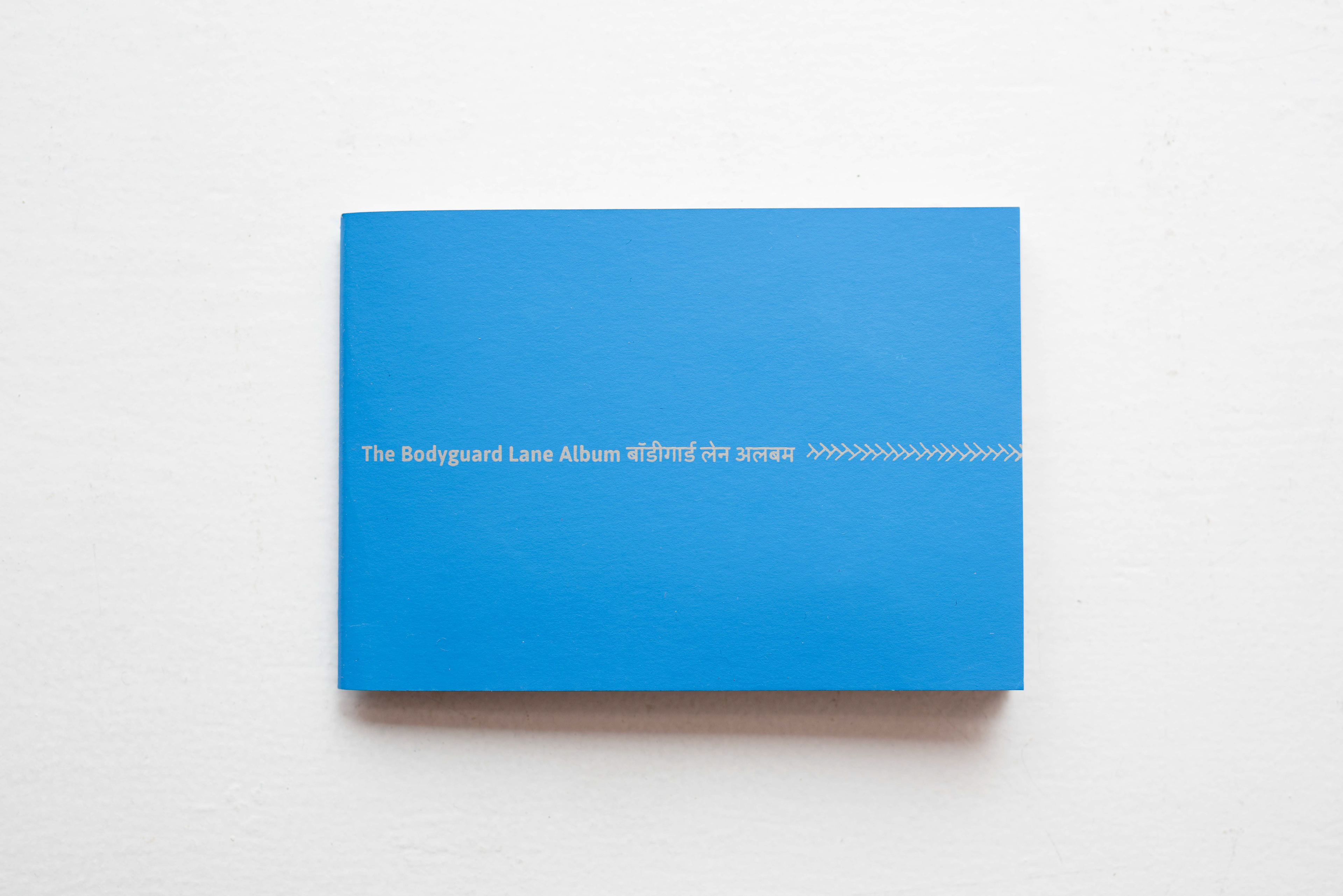
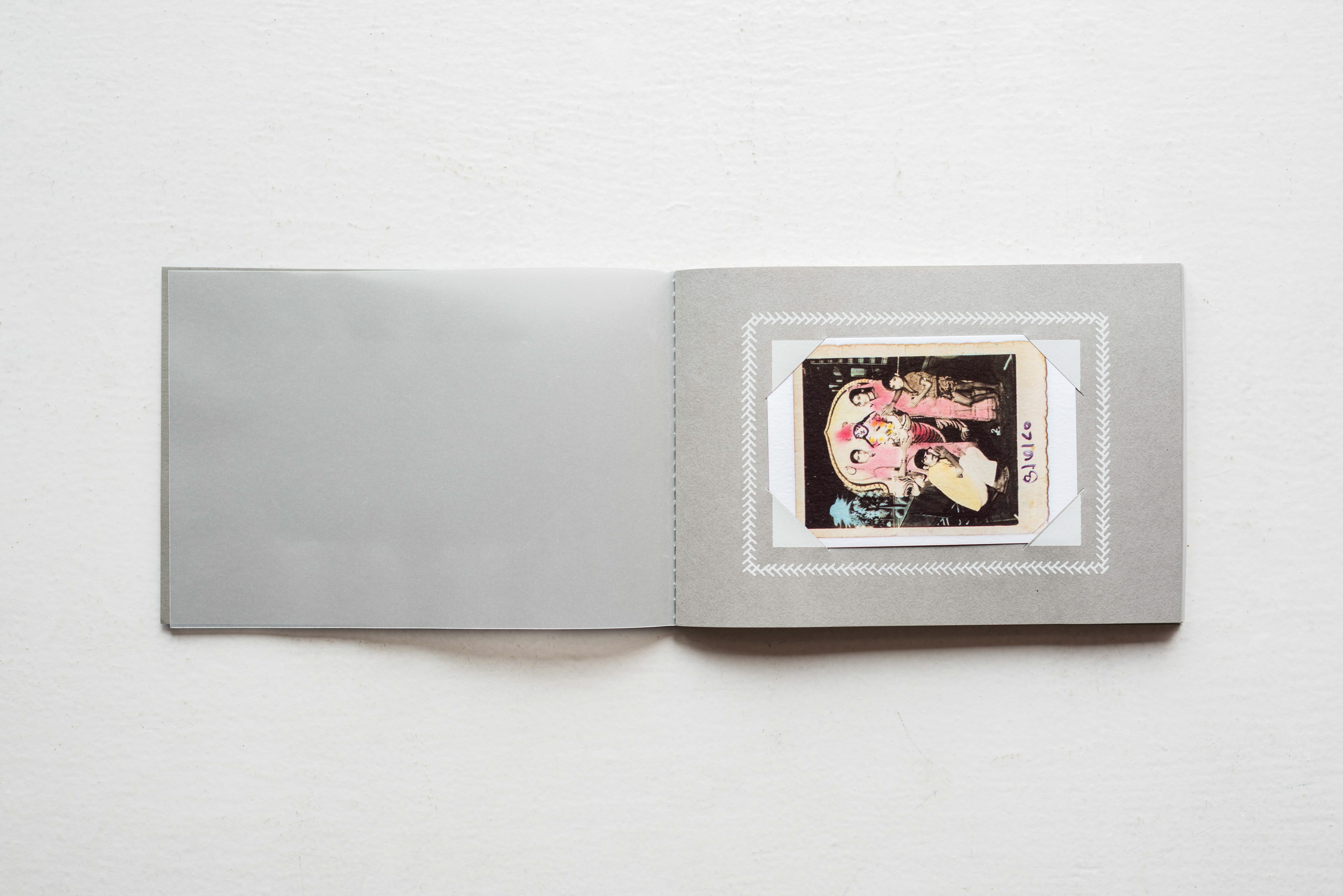

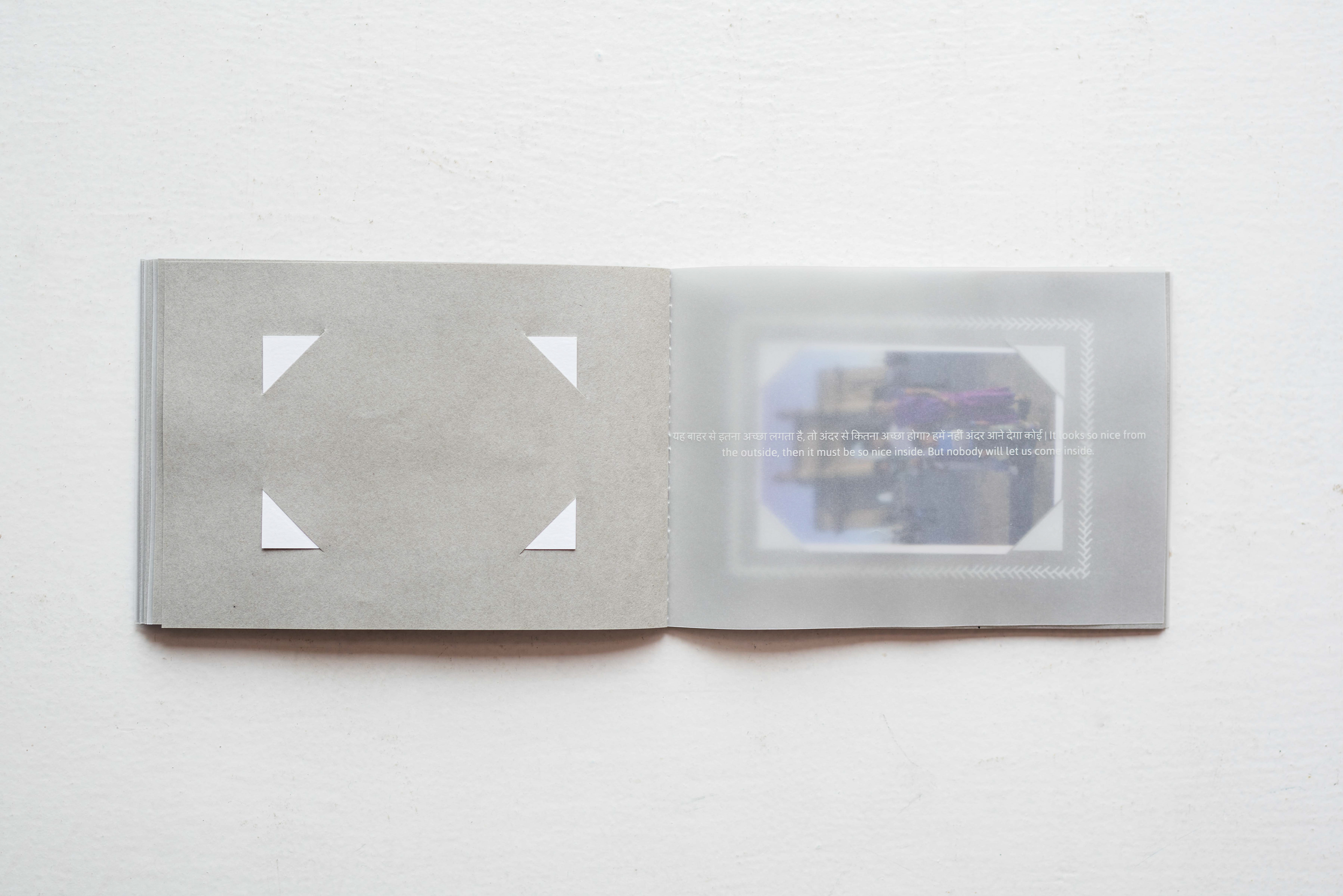
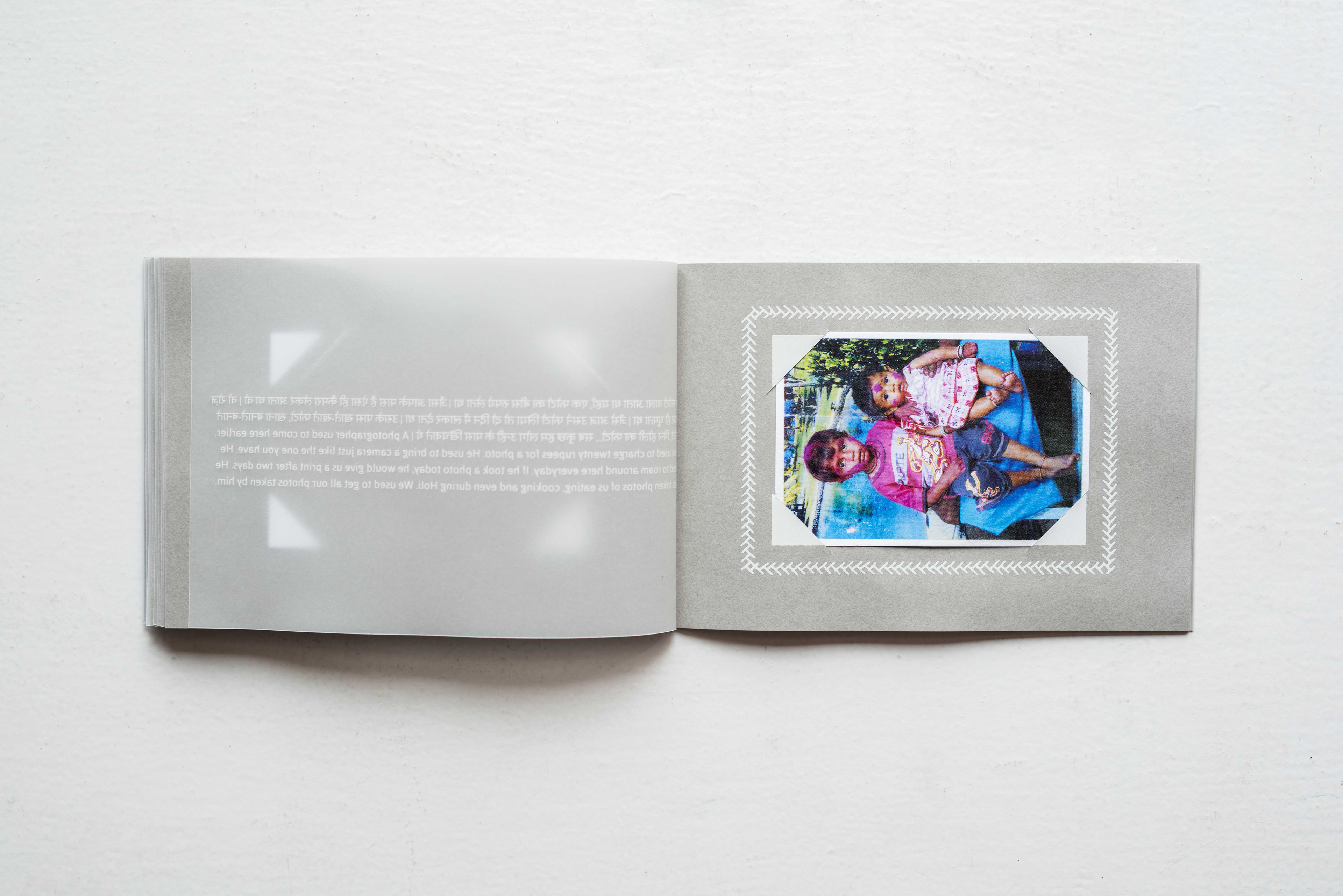
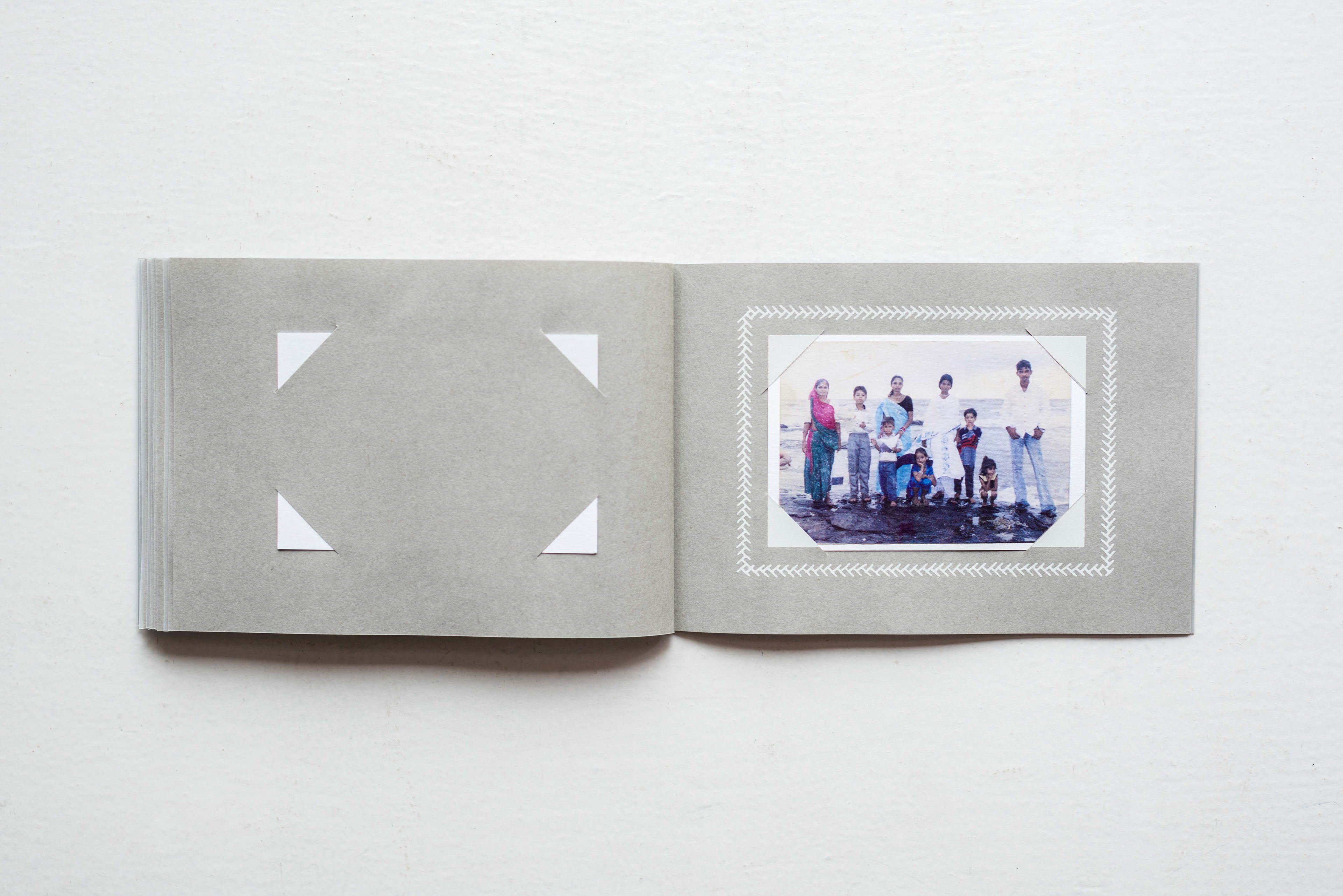

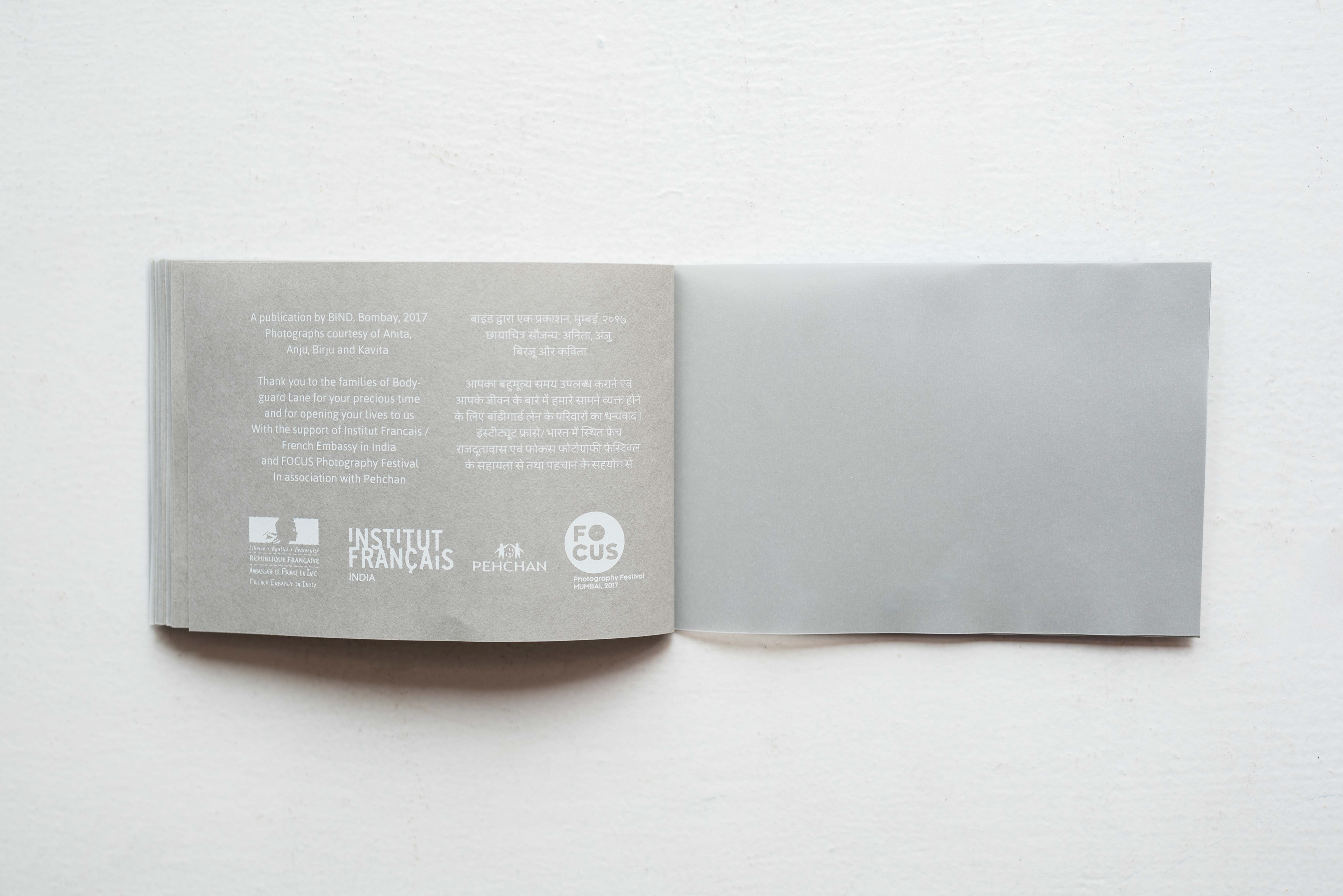

The Bodyguard Lane Album, BIND
52 pages, Soft cover
Self-published, March 2017
52 pages, Soft cover
Self-published, March 2017
This ongoing work is a development of the Bodyguard Lane Project started with BIND and supported by Institut Français en Inde (2016). It has since then received a grant from Civil Society of Multimedia Authors (Paris, 2020) and the Honorable mention of the Lange Taylor Prize from Duke University (2020).